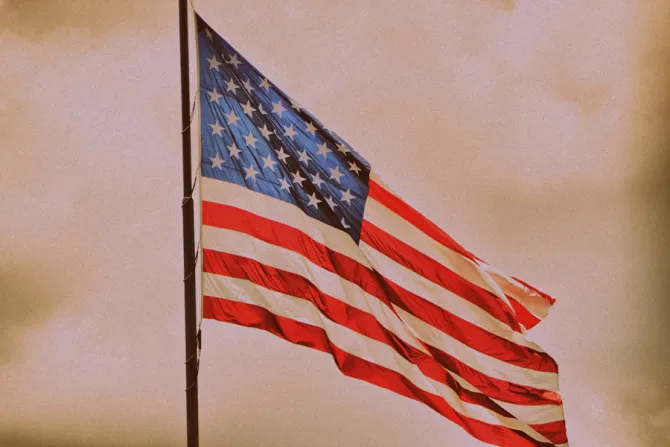Washington D.C., Jul 4, 2016 / 11:22 am
Both the Catholic Church and the tradition of religious freedom can trace their roots in the United States to the earliest days of the founding of Maryland, says a new documentary premiering on EWTN over the Fourth of July Weekend.
Greg Hendrick, producer of the documentary, "Catholic Beginnings: Maryland," told CNA that "many of the roots of Catholicism in America originated in Maryland."
"It's an essential part of U.S. history, not just for Catholics, but for all interested in exploring the grounds on which religious freedom and tolerance were founded."
The eight-part series premiered on EWTN beginning July 3 at 6:30 p.m. EST.
While Maryland was not the first place to have Catholic populations in what would become the U.S. – Spanish colonies and French trading outposts were settled first – the EWTN series focuses on Maryland because of its major role in both American history and Catholic history in the U.S.
The first episode of the series opens by tracing Maryland's roots from before the nation's founding, when it was the only predominantly Catholic British colony. This opening for religious tolerance within the British colonies later grew, as Maryland would go on at the time of the American Revolution to serve as a model of religious freedom for the fledgling nation.
King James I granted the charter for the proprietary colony of Maryland to George Calvert on June 20, 1632, allowing Calvert to decide what to do with the land. Following Calvert's death, his brother, Leonard Calvert, brought a group of settlers to the new colony on board two small ships, the Ark and the Dove. When they landed on March 25, 1634, on St. Clement's Island, a Jesuit priest, Fr. Andrew White, offered the first Mass in the British colonies.
Along with Fr. White, another Jesuit priest, Fr. John Altham, and a Jesuit Brother, Thomas Gervase, were also part of the initial colonizing expedition.
"This is where the colonists first landed, this is where the first Mass was said, and everything, everything starts from St. Clement's Island in St. Mary's County in Southern Maryland," Fr. Charles Connor, S.T.L., explained in the documentary.
However, understanding the significance of that first Mass requires an understanding of the British Catholics who were trying to make their way in the new colony. Fr. Connor continued.
George Calvert, who had been a close advisor of King James I made the decision to convert to Catholicism in 1625, and his conversion was a public one, rather than a quiet refusal to participate in the Church of England. This public rejection of the King's Protestant faith for the Roman Catholic Church cost Calvert his position as one of the Secretaries of State and other positions of importance, Fr. Connor expounded.
Yet, although his conversion cost him dearly, Calvert's friendship with the King also enabled him to secure the grant for the land of the colony of Maryland for himself, and, after death, his family members. Furthermore, Calvert's reputation enabled him to "gather about him a number of very wealthy individuals, both Catholic and Protestant, who were going to make their way to the new world, to the Chesapeake," and to fund and staff the founding of the new colony.
Many of the Catholic members of the expedition also sought to flee the persecution they faced in England and looked forward to practicing their faith in the new colony. "That's the reason. The hostility was terrible. And Maryland was going to offer the refuge," Fr. Connor said.
These beginnings – colonists fleeing religious persecution, the cooperation of both Catholic and Protestant backers and colonists – helped lay the foundation of the Maryland Toleration Act in 1649, one of the first religious toleration laws, and helped lay the beginnings of a framework of religious freedom.
This thread and other developments that sprung forth from the earliest days of Maryland – from the first Mass on St. Clement's Island and from the colony's founding itself, set the stage for the whole of Church history in the United States, Fr. Connor said.
"This really and truly is where the Catholic Church began in the United States."



